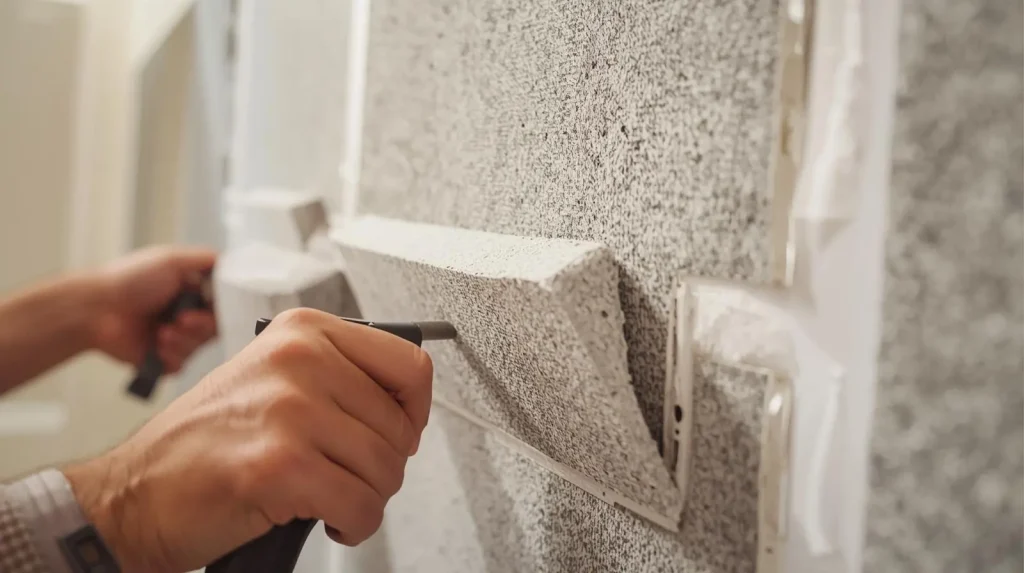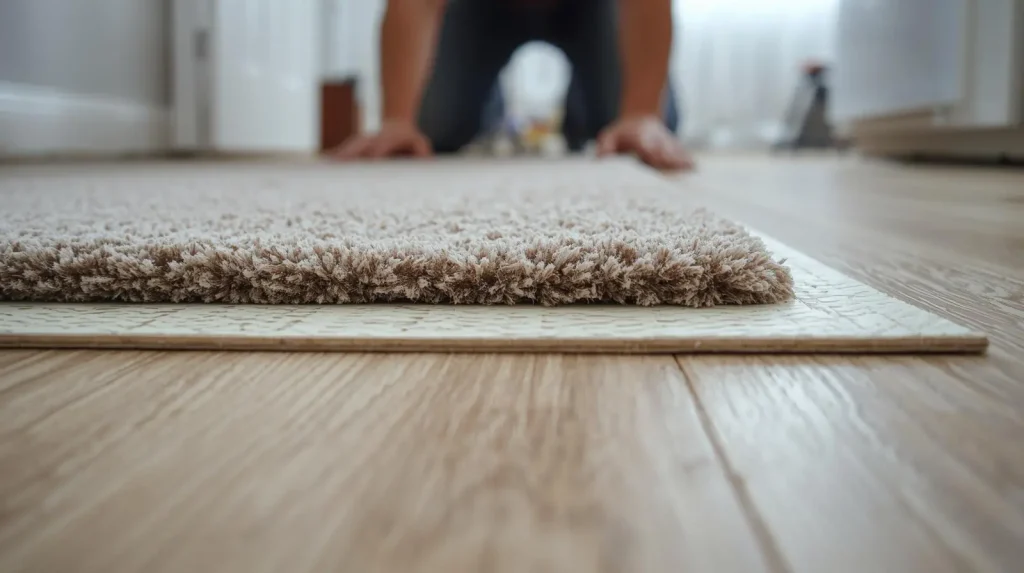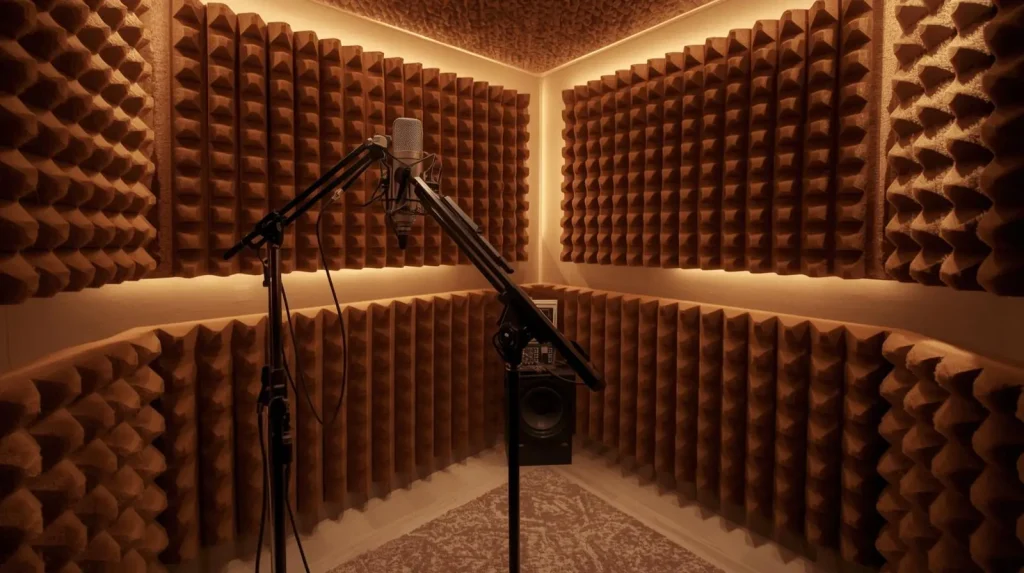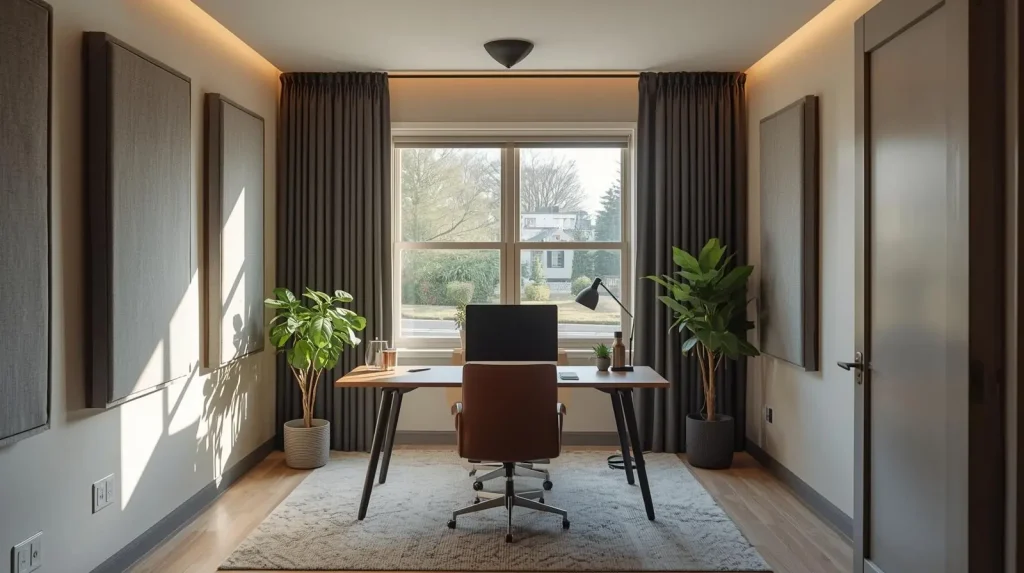In today’s fast-paced world, silence is a luxury. Whether you are working from home, recording a podcast, practicing music, or simply looking for peace, outside noise can be a constant distraction. A soundproof room solution is not just for professional studios anymore. Homeowners, remote workers, and content creators are investing in practical ways to block unwanted sounds and improve focus.
This guide explores effective soundproofing techniques, materials, and strategies that can transform any room into a quiet sanctuary.
Why Soundproofing a Room Matters
Noise pollution is more than just an annoyance. It affects concentration, sleep quality, productivity, and even long-term health. A soundproof room solution helps to:
- Reduce external noises from traffic, neighbors, or appliances.
- Improve audio quality for recording and streaming.
- Create privacy for meetings, calls, or personal relaxation.
- Add value to your home or workspace.
How Soundproofing Works
To find the right solution, it helps to understand the science. Sound travels in waves that can pass through walls, floors, and ceilings. A soundproofing room solution typically involves:
- Absorption: Using soft, dense materials that soak up sound.
- Blocking: Adding barriers that stop sound waves from passing through.
- Decoupling: Creating separation between structures to prevent vibration transfer.
- Damping: Reducing sound energy with special materials that weaken vibrations.

Choosing the Right Soundproof Room Solution
Identify Your Noise Problem
Not all noise is the same. First, identify what type of sound you want to block.
- Airborne noise: Voices, TV, traffic, barking dogs.
- Impact noise: Footsteps, furniture movement, banging doors.
- Low-frequency noise: Bass sounds from speakers or heavy machinery.
Understanding the noise type helps you select the right combination of soundproofing methods.
Walls: The Foundation of Soundproofing
Add Mass to Walls
The thicker and denser your walls, the less sound passes through. Popular methods include:
- Installing additional drywall layers.
- Using soundproof drywall with noise-reducing cores.
- Adding mass loaded vinyl (MLV) sheets.
Use Acoustic Panels
Fabric-covered acoustic panels are effective for reducing echoes and airborne noise inside the room. They are also available in stylish designs that enhance aesthetics.
Decouple Wall Structures
Resilient channels and sound isolation clips can separate wall layers and prevent vibrations from transferring. This is an advanced but highly effective solution.

Floors: Reducing Impact Noise
Install Soundproof Underlay
A high-quality underlayment beneath flooring materials helps block footsteps and vibrations. Rubber and cork underlays are popular choices.
Use Carpets and Rugs
Soft surfaces absorb sound waves. Thick area rugs with soundproof pads can make a noticeable difference in reducing noise.
Floating Floors
For serious soundproofing, floating floor systems create a gap between the floor and subfloor, preventing vibration transfer.

Ceilings: Controlling Noise from Above
Drop Ceiling with Acoustic Tiles
A suspended ceiling fitted with acoustic tiles is an effective way to reduce noise from upper floors.
Add Insulation
Fiberglass or mineral wool insulation placed in ceiling cavities helps block sound.
Double Layer Drywall
Adding another layer of drywall with damping compounds further improves sound control.
Doors: Closing the Sound Gap
Doors are often the weakest points in a room’s soundproofing.
- Upgrade to Solid Core Doors: Hollow doors allow sound to pass easily.
- Install Door Sweeps and Seals: These close the gaps at the bottom and sides.
- Add Door Soundproofing Kits: Specialized kits include seals, sweeps, and acoustic panels for doors.

Windows: Blocking Outdoor Noise
Windows are another major entry point for noise.
- Double or Triple Glazing: Thicker, multi-layer glass panes block more sound.
- Soundproof Curtains: Heavy, dense curtains absorb noise and reduce echoes.
- Acoustic Window Inserts: Secondary panes that fit over existing windows for extra insulation.

Furniture and Decor for Natural Soundproofing
Even without major renovations, simple changes can improve noise control:
- Bookshelves filled with books act as natural sound barriers.
- Upholstered furniture absorbs sound waves.
- Heavy curtains reduce both noise and light.
- Wall hangings and tapestries minimize echo.

Professional Soundproofing vs DIY Solutions
DIY Options
- Affordable and easy to install.
- Great for renters or temporary setups.
- Ideal for small noise issues.
Professional Soundproofing
- Necessary for complete isolation.
- Used in studios, offices, and high-noise areas.
- Involves advanced methods like decoupling and floating floors.
The right choice depends on your budget, needs, and noise level.
Best Materials for a Soundproof Room Solution
- Mass Loaded Vinyl (MLV): Thin, flexible sheets with excellent sound-blocking properties.
- Acoustic Foam Panels: Lightweight and effective for reducing echoes.
- Mineral Wool Insulation: Dense material that absorbs both sound and heat.
- Resilient Channels: Metal strips that isolate wall layers.
- Damping Compounds: Materials like Green Glue that reduce vibration.
Soundproof Room Ideas for Specific Needs
Home Office
- Install acoustic panels for better call quality.
- Use door seals to ensure privacy during meetings.
- Add rugs to reduce echoes.
Recording Studio
- Apply layered drywall and insulation.
- Add bass traps for low-frequency sounds.
- Use floating floors for maximum isolation.
Home Theater
- Heavy curtains and upholstered seating improve sound.
- Acoustic wall panels create a professional experience.
- Carpeting prevents sound from bouncing.
Bedroom
- Focus on windows and doors for peaceful sleep.
- Add thick curtains and weatherstripping.
- Use soundproof wallpaper for style and functionality.

Cost of Soundproofing a Room
The price varies depending on the scope.
- Basic solutions: $100–$500 (curtains, rugs, seals).
- Intermediate solutions: $500–$2000 (acoustic panels, drywall upgrades).
- Professional soundproofing: $2000+ (decoupling, floating floors, full renovation).
Soundproofing is an investment that pays back in comfort, productivity, and property value.
Conclusion: Find Your Perfect Soundproof Room Solution
Creating a soundproof space does not always require a full renovation. Even small upgrades like sealing gaps, adding rugs, or using curtains can reduce noise significantly. For those who need complete isolation, professional soundproofing with specialized materials is the best option.
Whether you want peace for work, better sleep, or improved audio quality, a tailored soundproof room solution can transform your environment.
Ready to design your quiet space? Start with small steps and scale up as needed. A calmer, distraction-free room is within reach.

